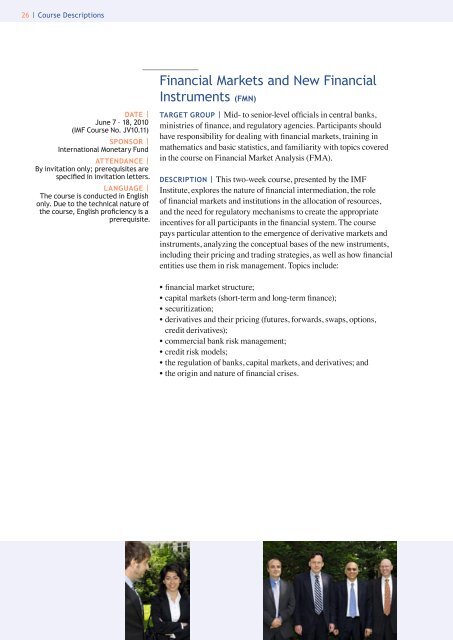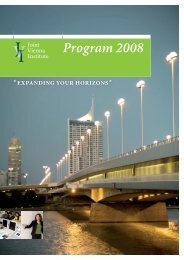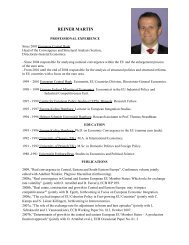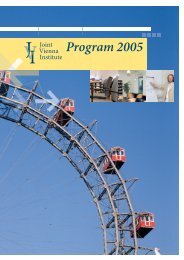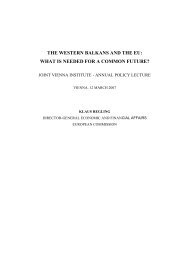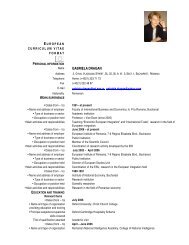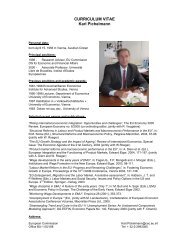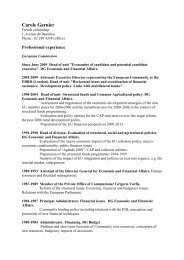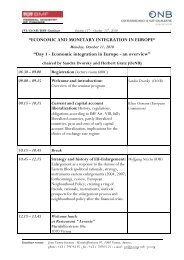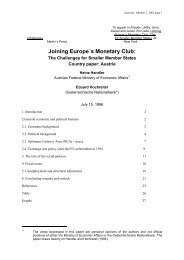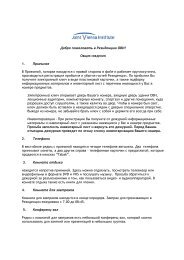Program 2010 - Joint Vienna Institute
Program 2010 - Joint Vienna Institute
Program 2010 - Joint Vienna Institute
- No tags were found...
Create successful ePaper yourself
Turn your PDF publications into a flip-book with our unique Google optimized e-Paper software.
26 | Course Descriptions<br />
Financial Markets and New Financial<br />
Instruments (FMN)<br />
Date |<br />
June 7 – 18, <strong>2010</strong><br />
(IMF Course No. JV10.11)<br />
Sponsor |<br />
International Monetary Fund<br />
Attendance |<br />
By invitation only; prerequisites are<br />
specified in invitation letters.<br />
Language |<br />
The course is conducted in English<br />
only. Due to the technical nature of<br />
the course, English proficiency is a<br />
prerequisite.<br />
Target group | Mid- to senior-level officials in central banks,<br />
ministries of finance, and regulatory agencies. Participants should<br />
have responsibility for dealing with financial markets, training in<br />
mathematics and basic statistics, and familiarity with topics covered<br />
in the course on Financial Market Analysis (FMA).<br />
description | This two-week course, presented by the IMF<br />
<strong>Institute</strong>, explores the nature of financial intermediation, the role<br />
of financial markets and institutions in the allocation of resources,<br />
and the need for regulatory mechanisms to create the appropriate<br />
incentives for all participants in the financial system. The course<br />
pays particular attention to the emergence of derivative markets and<br />
instruments, analyzing the conceptual bases of the new instruments,<br />
including their pricing and trading strategies, as well as how financial<br />
entities use them in risk management. Topics include:<br />
• financial market structure;<br />
• capital markets (short-term and long-term finance);<br />
• securitization;<br />
• derivatives and their pricing (futures, forwards, swaps, options,<br />
credit derivatives);<br />
• commercial bank risk management;<br />
• credit risk models;<br />
• the regulation of banks, capital markets, and derivatives; and<br />
• the origin and nature of financial crises.


